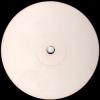One thing I like about magic in games is it's tendency to break up the realistic mechanics. When everything else is based on reality, magic sets the designer free to come up with something new and different.
It's a double edged sword though, as a realistic setting, the player can infer what something does by what it would do in the real world. An anti-tank gun is going to be good against tanks, a machine gun is going against people, and so on.
Anyway, depending on the game, but I prefer hidden information, but low randomness. Position units for ambushes and such, submarine warfare, having to properly scout and use recon units, etc. That said, one of my favorite tabletop games of the past was Through The Desert, which had zero randomness and full information. Games that have a high random factor can irritate me, as I feel like I'm too much at the mercy of the random number generator.






